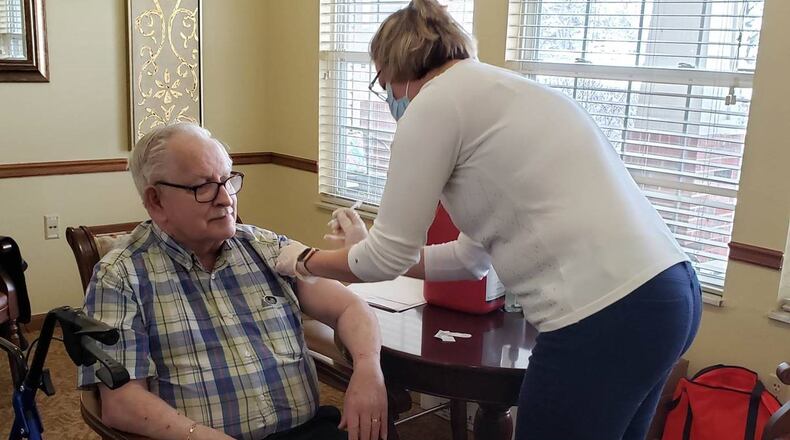Researchers looked at county-level vaccination rates and COVID-19 outcomes among Medicare beneficiaries, which encompasses the vast majority of American elderly. The study found that vaccines may have prevented roughly 12,000 new infections and 5,300 hospitalizations among seniors in Ohio between January and May. In the same time period, the study also found that among Medicare beneficiaries, vaccinations may have prevented approximately 265,000 infections, 107,000 hospitalizations and 39,000 deaths nationwide.
Chip Wilkins, Dayton-based long-term care ombudsman who advocates for resident rights, believes vaccines have likely saved even more lives but understands the report errs on the conservative side.
“Even with COVID still rampant in the community, we are seeing now, instead of having 20 to 30 nursing home residents involved in an outbreak, it’s only two or three for the most part,” Wilkins said. “And with fewer cases you would expect fewer deaths. And it’s really the exception now rather than the rule that vaccinated residents go to the hospital. I mean most are able to recover without hospital intervention.”
Other key findings from the report released on Tuesday include:
- The study found an 11% to 12% decrease in weekly COVID-19 hospitalizations and deaths among Medicare beneficiaries for every 10% increase in county vaccination rates.
- All racial and ethnic groups and all 48 states analyzed had reduced numbers of COVID-19 deaths, hospitalizations and infections linked to vaccination rate increases.
- Vaccines were linked to a reduction of about 5,600 deaths among nursing home Medicare beneficiaries.
This report demonstrates that not only do vaccines protect the individual against COVID-19, Wilkins said, but also the rest of the community.
“We’re not doing vaccines, just for ourselves,” he said. “It’s for our neighbors, our-co workers, it’s for the most vulnerable, the seniors in nursing homes.”
Peter Van Runkle, executive director of the Ohio Health Care Association, a trade association representing long-term care providers in Ohio, said that since coronavirus vaccines were distributed, Ohio has seen nowhere near the number of cases in long-term care settings the state saw earlier in the pandemic.
“The only thing that changed is we got vaccinations,” Van Runkle said. “There’s just no question that vaccinations are just the absolute number one factor in preventing illness, preventing hospitalization and preventing death.”
The high watermark for weekly COVID-19 cases reported in Ohio’s long-term care facilities was over 5,000 cases reported one week in December. The most recent high came the week of Sept. 22 when just under 700 such cases were reported.
“Not only have the vaccines saved lives,” said Patrick Schwartz, spokesman for LeadingAge Ohio, which represents nonprofits in long-term care. “They’ve also brought back well-deserved freedom, security, and social opportunities to residents who had previously endured months without visitation or face-to-face time with their loved ones.”
Have questions about COVID-19, face masks, vaccines, testing, quarantining or anything else pandemic-related? Send them to jordan.laird@coxinc.com. Answers will be published regularly in print and online.
About the Author

